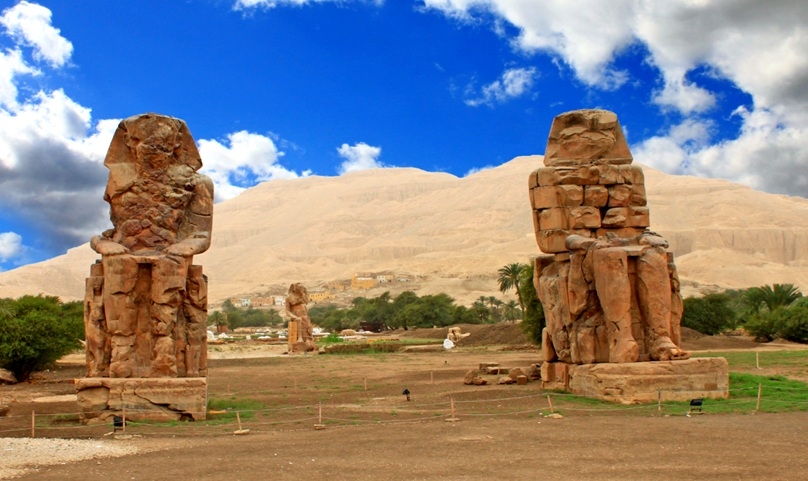Luxor city is the hosting home for most of the pharaonic Egyptian monuments. The city with its two banks are enrich with history and legacy that date back to thousands of years. Luxor was the chosen city by ancient Egyptian kings to be the capital during the middle and new kingdom, and to be settle of their temples, tombs commemorating statues. among them is the colossi of Memnon which is located on the west bank, and belongs to king Amenhoteb III from the 18th dynasty.

Colossi of Memnon
The first attraction to be encounter in Luxor west bank is the colossi of Memnon which was built as a guardian to the funerary temple of king Amenhoteb III. The mortuary is now vanished and has no left sing of it but tiny rock cracks. The colossai twin statues are still standing to welcome the visitors until our day. The origin of the name Memnon comes from the Greeks when they visited the site. They were impressed and amazed by the design of the statues, and identified them with the Greek hero Memnon son of Aroura, an ancient Greek goddess.
The shape of the colossi
Each of the royal statues stands 18 meters high, weighs 270 tons, and is carved from sandstone. These giant statues depict King Amenhotep III seated on his throne with his hands on his hips. His mother, Mutemuia, and his wife, Tiy, appear as smaller statues standing beside him. Hieroglyphic texts and some decorations are carved on the back.
Travel to Egypt offers Luxor day tours and packages that include a visit to the Colossi of Memnon on Luxor’s west bank. Additionally, you can explore Nile River cruise packages, where you will cruise between the two banks of Luxor city.
The function of the colossi









